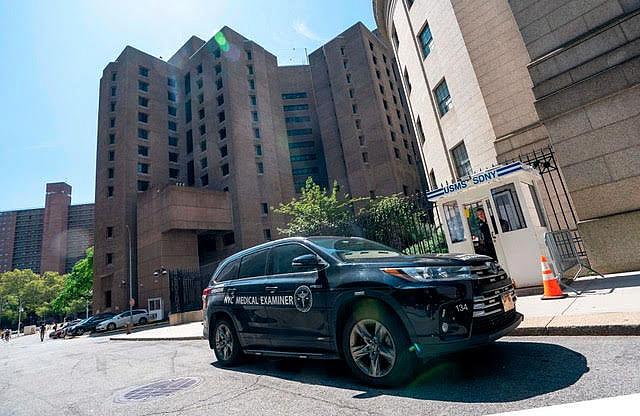Ignore the conspiracy theories and report on the real causes of jail suicides

(Photo: Don Emmert/AFP)
Now is your chance. There is an obvious investigation to be had inside your local jail system, and your editor will sign off on it because everyone is talking about Jeffrey Epstein’s death. The work won't be easy, but it will be the kind of work where journalism serves its highest purpose: shining a light into dark corners where no one else wants to go.
I first became interested in jail suicides when I was reporting on the state prison in Montana. I covered a murder trial — the trial of one inmate accused of murdering another inmate — and found out during that reporting that while murders were quite uncommon inside the prison, suicides were not.
Fast forward to the suicide death of Sandra Bland, a milestone in the Black Lives Matter movement. Her death sparked a few stories here and there about how conditions and protocols inside jails can exacerbate crisis situations and lead to suicides. Dana Liebelson at HuffPost wrote:
A HuffPost investigation found that of the more than 810 people who lost their lives in jail in the year following Bland’s death, nearly one-third died from suicide. People can quickly deteriorate after being arrested: In HuffPost’s data, at least one-quarter of the suicides occurred within the first three days. But in jails — which mostly hold people who have not been convicted of a crime — suicides can be prevented through processes such as conducting thorough inmate screening and making sure staff monitors inmates at appropriate intervals, which save lives.
Now Epstein’s death is bringing fresh attention to the topic.
There are many angles for you to pursue here, but the best may be the mental health angle. On the whole, the way we treat mental health conditions generally is poor. We are still climbing out of an era in which mental health conditions — including drug and alcohol addiction — were seen as weaknesses, curses, or anything other than diseases that deserved attention. Now take that a step further and think about how we view and treat people who suffer from addictions and other mental health problems and who are also homeless.
Many of them are ending up in jail. If you have a mental health condition you may already be caught in a slow-moving crisis. Then you are homeless, and the crisis is compounded. In part because of your homelessness, you are likely not receiving any treatment or are unsupported in whatever treatment plan you may once have had, and the crises worsens. Then you are put into jail, where you are essentially isolated and restricted from movement. The breaking point is reached. Conrad Wilson wrote a piece about jail suicides and the hanging death of Janelle Marie Butterfield in Oregon:
“She was homeless for the last, probably six years,” (Connie) Dence, Butterfield’s mother, said through tears. “She just lost it.”
A good starting point for reporters is to talk with mental health service providers in your area, especially psychologists and psychiatrists from any universities or teaching hospitals. What are common services that should be provided to the mentally ill? How should they be treated in a crisis situation like an incarceration? What’s wrong with local jails’ current approach? What can jail staff do to identify suicidal ideation and lessen the chances of a suicide?
The next place you can go is the U.S. Department of Justice’s statistics. Al Tompkins at Poynter wrote a piece encouraging journalists to examine jail suicides after Epstein’s death, and made great use of federal statistics saying:
In jails holding 50 or fewer inmates, the suicide rate was 167 per 100,000; in the largest jails, the suicide rate was 27 per 100,000 inmates, the DOJ said. Even though prisons hold many times more men and women than local jails, more people take their own lives in jails. In prison, illness is the leading cause of death, while suicide is the leading cause of death in jails and has been for more than a decade, according to the Bureau of Justice Statistics. A 13-year study showed jail suicides to be increasing steadily after a brief drop a decade ago.
Take note, though, that you may have to hunt for your own data, too. Wilson and his colleagues at Oregon Public Broadcasting and KUOW in Seattle had to gather their own data. Similarly, Gary Harki at the Virginia Pilot created a blueprint for what I’m encouraging you all to do. Undeterred by a lack of data at the state-level on the link between mental illness and jail suicides, Harki and students at Marquette University tracked down 404 deaths of people with mental illnesses in jail.
These are among the most vulnerable and the most invisible people in your communities. Remember, in most cases they haven’t even been convicted of a crime. They’ve merely been arrested. And they certainly don’t deserve to die just because they are in a state of crisis.
